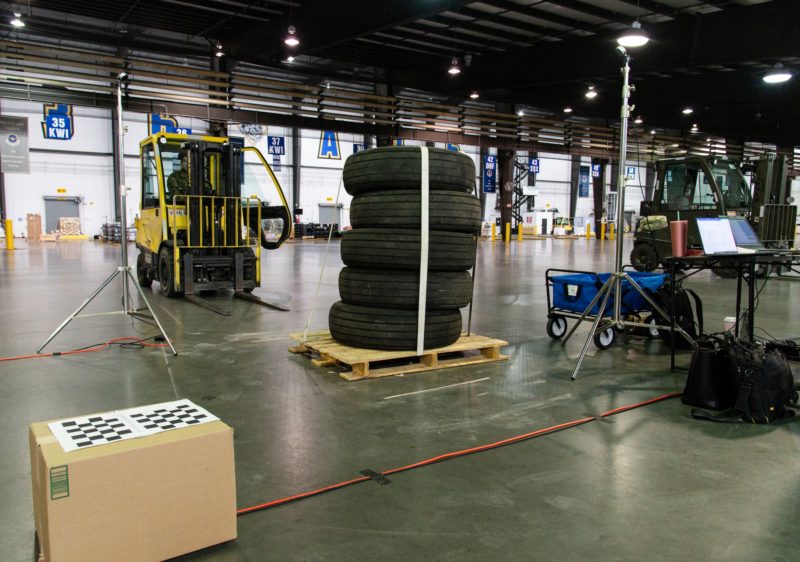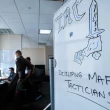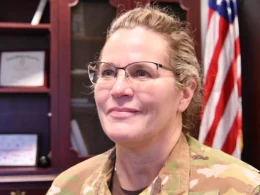DOVER AIR FORCE BASE, Del. —
The Configured Air Load Building Tool, a system being developed as part of the “Aerial Port of the Future” initiative, was recently tested in the 436th Aerial Port Squadron at Dover Air Force Base, Delaware.
The CALBT system consists of Light Detection and Ranging cameras to create 3D images of cargo received by the 436th APS, also known as the Super Port, along with hand-held tablets and software that enable pallet building efficiency.
Currently, Air Mobility Command and U.S. Transportation Command estimates that only 75% of available pallet space is efficiently being used; 80% to 90% pallet space utilization is the goal of CALBT.
“The effort of CALBT is to optimize the cargo flow, which is 75% of what the aerial port does by moving cargo,” said Tech. Sgt. Christopher Decker, Headquarters Air Mobility Command innovations, systems and futures manager. “By efficiently automating the process on how we accept cargo and how we push that cargo through our facilities, onto aircraft and how we receive cargo at the aerial port is how CALBT fits into the aerial port of the future.”
Since the beginning of the air transportation career field, nowadays referred to as 2T2, there have been few changes to how cargo is processed.
“The 2T2 career was developed in the 1950s and since the 1970s, [we] have remained stagnant in our process improvement with majority of the processes remaining the same,” said Decker. “Aerial port of the future is an effort to modernize and catch up to industry standards.”
The Global Air Transportation Execution System was adopted in the 1990s to process cargo, and is still being used by aerial port Airmen today. Another legacy system, Cargo Movement Operational System is used by the Traffic Management Office. GATES and CMOS sometimes do not interface with one another. These two systems are used for Dover AFB’s sustainment and strategic airlift missions.
Capt. Christian Potts, Air Force Research Laboratory autonomous control engineer, and her team evaluated CALBT as part of a small business innovative research project. Currently in phase two of the project, the goal is to develop autonomous software and hardware tools for automating the load building process and receiving into the aerial port.
The tests conducted while utilizing CALBT used actual cargo delivered by trucks and unloaded at the docks.
Airmen handle and process a piece of cargo between seven to 10 times, from the moment it is received until it is put on a pallet. By incorporating CALBT capabilities, the goal is to reduce that number by 50%, using algorithms to streamline the pallet building process.
“In layman’s terms, [CALBT] is trying to [automate and] optimize the pallet building process by taking 3D scans of incoming packages, figuring out the dimensions and figuring out all the information on the [shipping] label,” said Dr. Angela Garza, Cougaar Software Inc. senior operations research engineer.
By using a tablet to scan shipping labels, information such as the transportation control number, priority, hazards, and weight become readily available.
“CALBT is a form of artificial intelligence because it is automating the pallet building process and uses genetic algorithms to take in a bunch of different goals and objectives and look at different constraints to come up with an optimal solution,” said Garza.
More CALBT testing at the Super Port is scheduled for February 2022.










